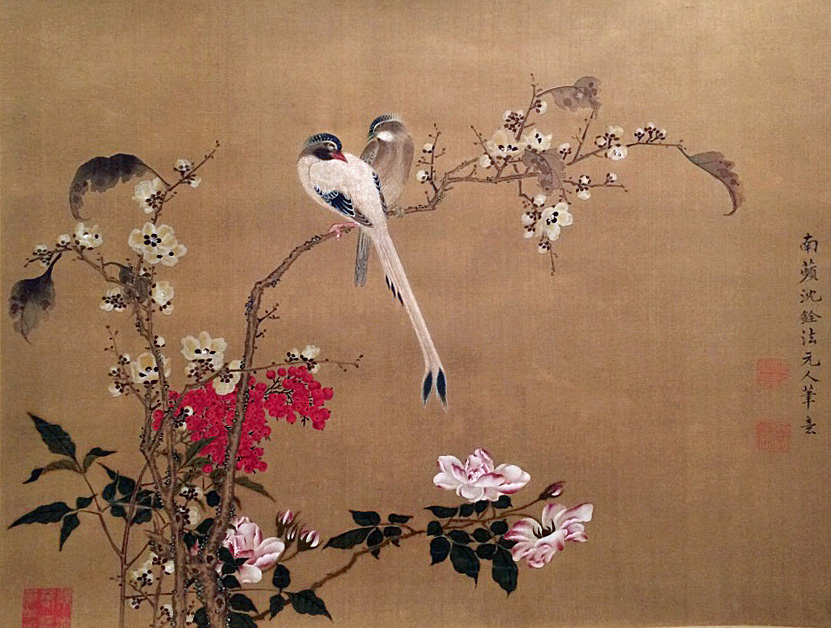Title:
A study of 18th to 19th-century Nanpin and Japanese Nanpin School paintings through art-historical and material analysis of the British Museum and the Ashmolean Museum collection
Overview
The main research question of the project is how 18th to 19th century Japanese Nanpin School paintings were created in terms of materials, media and painting techniques, such as composition, brush work and colour combinations, when compared to works by the Chinese artist, Shen Nanpin (Figure 1), and how these elements were transmitted to other Japanese painters.
By the mid-Edo period, when the shogun Tokugawa Yoshimune invited Nanpin to Japan, painters of the official Kano and Tosa Schools, who held powerful social positions, had become complacent and lost their creativity and energy. Nanpin arrived at Nagasaki in 1731 and taught his painting methods to Yuhi, his Japanese pupil. Nanpinʼs elaborate and splendid Chinese Northern Palace School painting style was well received by daimyo Japanese feudal lords. Nanpinʼs painting style is conservative and the subject is flower and bird, often including celebrative subjects, kissho. It influenced Japanese artists, spreading rapidly across Japan especially Edo through Nanpin School artists.

Figure 1. Example of a painting by Shen Nanpin (沈南蘋) (c. 1682-1760) at the British Museum. Flower and bird, ink and colour on silk, hanging scroll.
Addressing the Challenge:
The specific research questions are:
1. How did Song dynasty court painting style influence Nanpin and the Nanpin School?
2. How did Nanpin influence the Japanese Nanpin School in terms of artistʼs material?
To answer these art historical questions, primary sources will be used such as Shin Nanpingazu Hyappuku, and Ransai gafu, Nanpin and Yuhiʼs teaching methods written by Mori Ransai will be carried out. In addition, non-invasive scientific methods will be conducted on Nanpin, Nanpin School and selected 17th and 18th century Kano and Tosa School paintings at the British Museum and the Ashmolean Museum to distinguish between the different Schoolsʼ palettes, the use of pigments, painting schemes and types of sizing. Part of this study will also analyse pigment samples from the collection of the Lord Nabeshima.
The trading routes and where and how artists purchased pigments, silk and paper in China and Japan, as well as how artists selected painting materials focusing on painting expression will be investigated. These investigations will be guided by the results of non-invasive scientific analysis of Nanpin and Nanpin Schoolʼs artistʼs materials using facilities provided by the ISAAC mobile lab and the British Museum.
Academic Supervisors:
Dr Natasha Hodgson (History, Nottingham Trent University)
Professor Haida Liang (ISAAC, Nottingham Trent University)
Museum Supervisors:
Dr Capucine Korenberg (Scientific Research, The British Museum)
Dr Clare Pollard (The Ashmolean Museum, University of Oxford)
PhD Student: Makiko Tsunoda (Arts and Humanities, Nottingham Trent University)
Sponsors
AHRC/ Midlands4Cities Doctoral Training Partnership
The British Museum